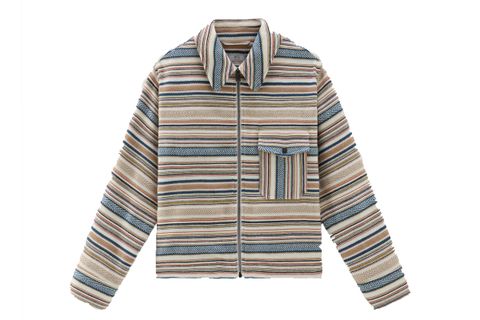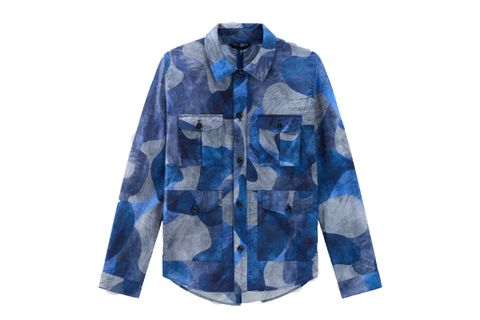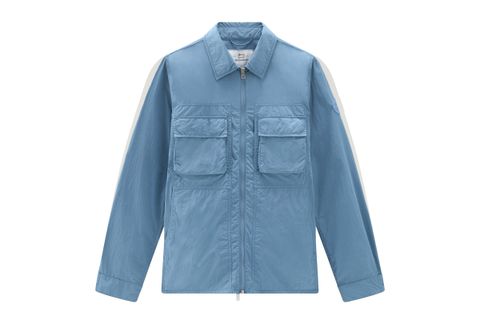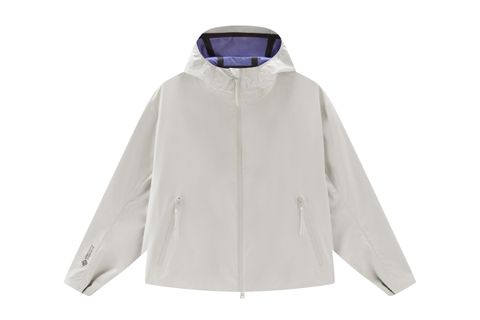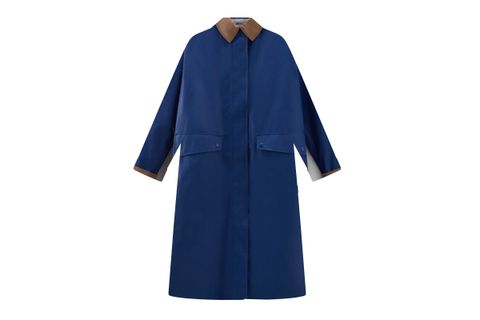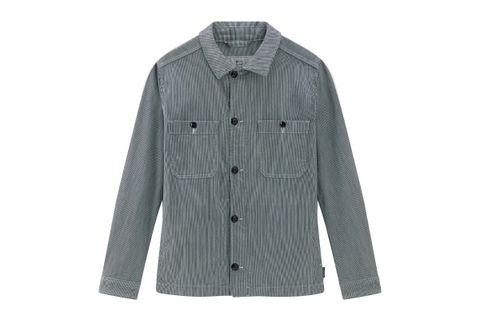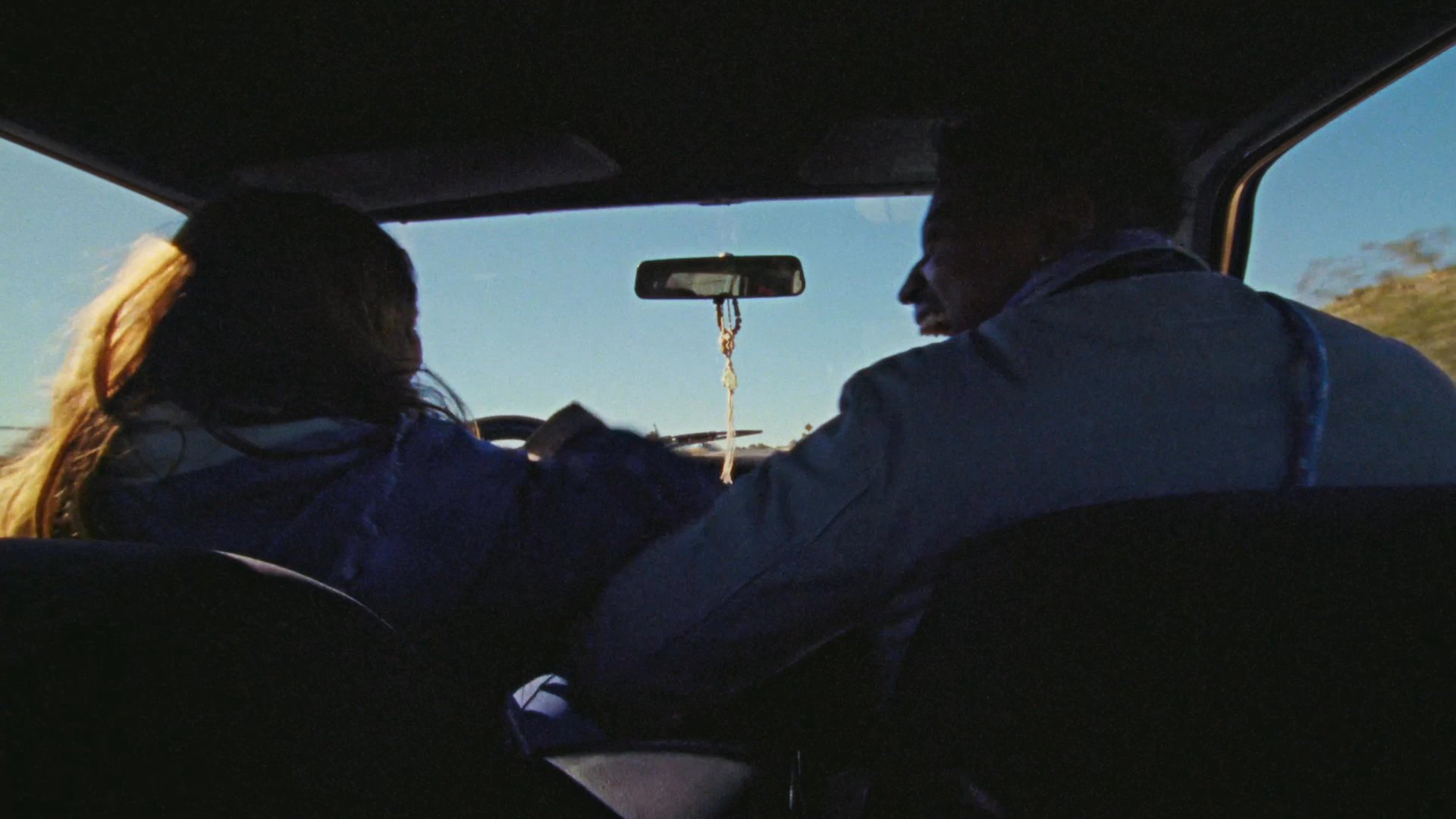
So many images come to mind when thinking of the word Americana. Images that arrive in beautiful, atmospheric analog stills warmed by blue skies and setting suns. They focus on star-spangled banners, cowboy boots, and motel signs. Drive-in movie theatres and striped buckets of buttered popcorn. Patchwork quilting, sprawling vistas, convertibles, and the wide open road. They show everything that makes the American dream so, well, dreamy.
They also show people. At the heart of every Americana story are the lives of those who are living it, the authentic experiences of individuals who call the vast landscape their home. It’s these stories that form the heart of Woolrich’s SS24 campaign, Origin Stories: Americana — a visual celebration of the small moments and big dreams that speak to Americana, told through a lens and an adventurous spirit — which, if you think about it, is a natural fit for America’s original outdoor brand.
To tell such stories, Woolrich enlisted the help of photographers Amber Maalouf and Mike Gray — two talents with a remarkable vision and knack for shining a light on the social, political, and environmental narratives that matter. Together, they embarked on a road trip through America on a mission to take the perfect Americana shot, to capture the essence of the culture and its ideology on film. It was a slow, reflective process, one that’s rooted in the land and the people they meet as they journey through it. The surrounding campaign is the result.
Ahead of their road trip, we sat down with Gray and Maalouf to learn a little more about their process and the role Americana plays in their work.
What does the word Americana mean for you in photography?
Mike Gray (MG): Americana in photography means capturing life around Americans authentically, from humanity to the surrounding environment. This is all a part of life for us. [This style] uniquely gives the photographer the power to capture the world around them and how they view it. That’s what I love about this genre. You could give a handful of photographers the same environment, but each person will tell a different story.
Amber Maalouf (AM): Americana photography is just as much about the land as it is about the people. It’s visual, an egress into our past and future. I think of landscapes, animals, and people that have inhabited this land, both native, endemic, and adventitious. It's a time capsule; it always moves forward with a slight yearning to return. It's patient. You can't rush film. It's the only time I slow down.
What do you look for in the American landscape to capture?
MG: I usually don’t just shoot landscapes, but I love an environment that assists in the stories I like to tell. History and character are two main things that I look for in American landscapes.
AM: In the American landscape, you don't have to look as much as you have to feel what to capture. Not everything is with the eyes. Photography, at the heart of it, is telling you something. It's poetry. The novel you didn't write. The script you couldn't word.
What did you learn from the originators of the Americana style of photography?
MG: Less is more. Sometimes, you don’t need a million components to tell a captivating story. That’s why I enjoyed the works of William Eggleston. He gave some of the most simplistic scenarios power through his lens.
AM: There is no one right way to do things. Everything has been done before. It's how you do it that makes it original.
What ‘moments’ do you love about what you do that keep you pursuing your craft?
MG: The moments that keep me in pursuit of my creative journey [are found in] the process of my film photography experience. I get such a fulfilling rush when I see an idea I’ve had in my mind for months come to life: the personal connection I have with my film from the moment I load it in my camera to the development and scanning of the negatives. As a creator, I love spotlighting other human beings, making them feel special while collaborating on beautiful stories.
AM: The moments I hold dearest are between me and the subject, that 60-second shutter, the blink before and the blink after, the gratefulness I feel to be allowed into someone's life like that; it's so earnest. Photography has bridged a lot of worlds for me. I feel like I've existed on many different planes. Planes that, at the time, don't seem consistent. But when creativity is the common motif, I suddenly make sense in my entirety.
What story are you trying to tell with your work?
MG: I take photos of all ethnicities, but I mainly picked up a camera to change the narrative for my culture. My goal has always been to put Black people in positions of power in time periods they wouldn’t normally be in. Capturing my people in a beautiful and authentic way has always been my priority, whether that was in photography or filmmaking.
AM: As of late, my work has been documenting themes related to human relationships with biodiversity and empathy for all living things. Specifically, my hope has been to help people recognize that preserving our natural world starts the second you walk out your front door.
How would you describe your style of photography?
MG: I tend to use cinematic stills, close-up portraiture, and staged scenes to elevate society by drawing on past historic events. I’d say the majority of my work comes from nostalgic inspirations. I truly enjoy telling the stories from the past and recreating historic moments in America. It’s almost as if I’ve been transported in time when I rent a classic car or style [someone] in vintage clothing. I love warping the past to weave a better future.
AM: Describing my work makes me anxious. I think it's more important and accurate to have someone else do it. So, in the words of my twin sister: “She has a knack for making people feel at ease enough to capture intimate moments that would otherwise never be documented. She gives people an authentic reflection of themselves because it’s portraiture with emotion.
Discover more about Woolrich SS24 and shop the collection here.
